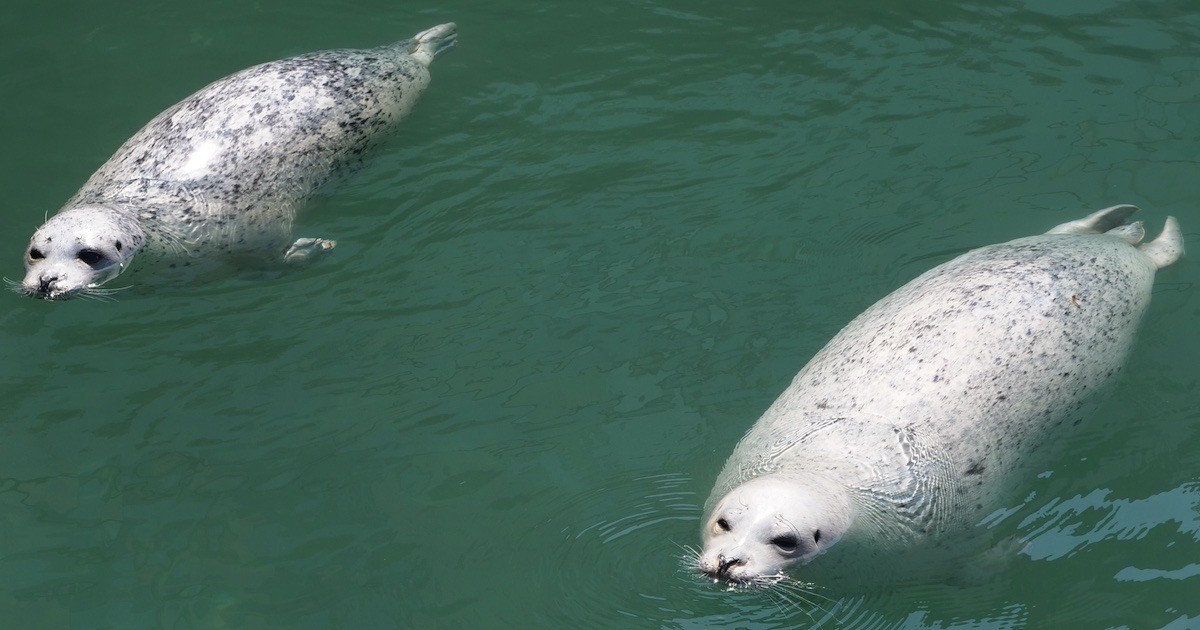
Unless you’ve been living on another planet, you know that southern BC is going through an unprecedented drought. Stage 4 water restrictions are law in many southern BC communities. On October 17, 2022 the Sunshine Coast Regional District even implemented a state of emergency lasting until October 24, 2022.
Prolonged drought conditions also have unintended consequences, particularly on fall runs of salmon trying to access smaller coastal streams and rivers. To use a football analogy, “It’s fourth down and 20 yards to go with 10 seconds left on the clock”.
It’s not all bad. Rivers on the south coast that are lake fed, have artificial water storage capacity with legally bound requirements to release water for salmon conservation purposes, and access to hatcheries for fry rearing will be less affected, if at all.
For example, water-release protocols are in effect for the Sooke River and for Charters Creek, a main Sooke River tributary. The flow to Charters allows the Sooke Salmon Enhancement Society to operate its hatchery.
The water level is still below normal for late October, but sufficient to allow fish to enter the Sooke River. As of October 19, 2022 the Enhancement Society’s Bryan Manning reported that “100,000 Chinook eggs are in the incubator room” but “this is less than half we can take under our DFO license”.
The concern is for streams that do not have stored water capacity. Todd Creek, another tributary of the Sooke River, falls into this category. The photos below compare normal water flow on Todd Creek with flows during 2022’s drought. Photo # 1 was taken on October 16 2020 while assessing salmon, while photo # 2 shows the same section of Todd Creek on October 18, 2022.
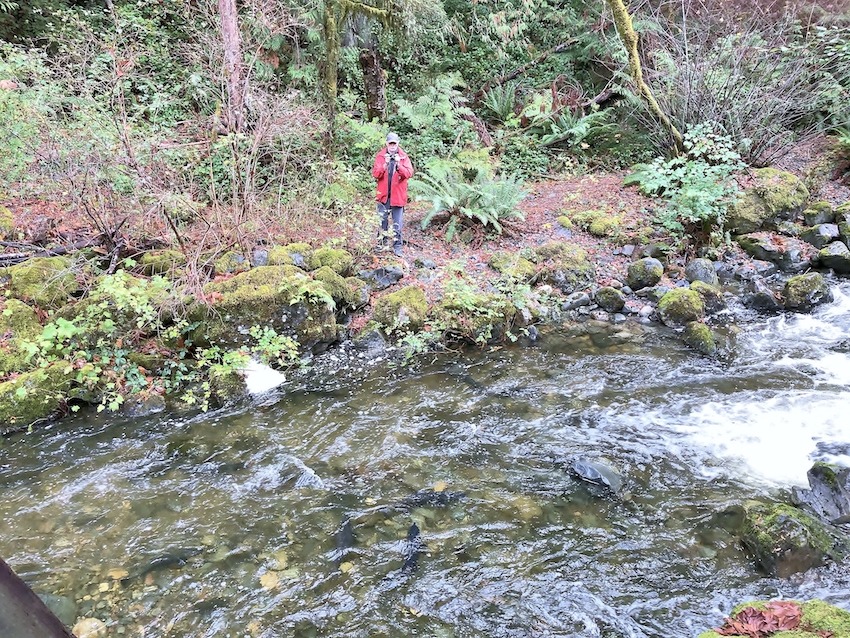
Sooke Chinook 2020 Spawners —Todd Creek October 16 2022. Photo Glen Varney
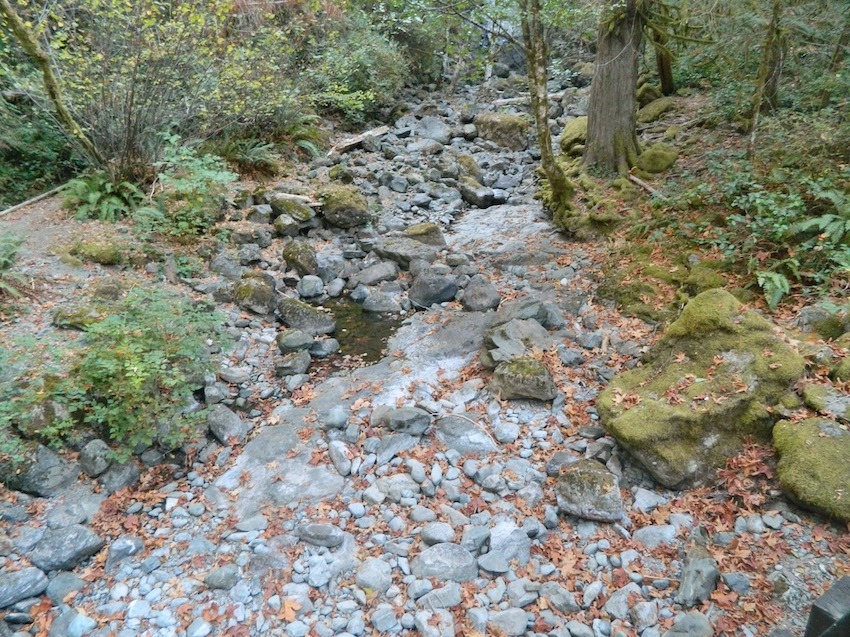
Sooke’s Todd Creek Drought Oct 18, 2022. Photo Tom Davis
Seals, Sea Lions, and Salmon: The Solution

Seals and Salmon Island Fisherman Illustration
Their hunting behavior is part of the natural cycle. However during droughts the relationship tilts against salmon because many more are susceptible to pinniped predation. Even those that do escape are stressed, which reduces energies reserves needed to spawn successfully.
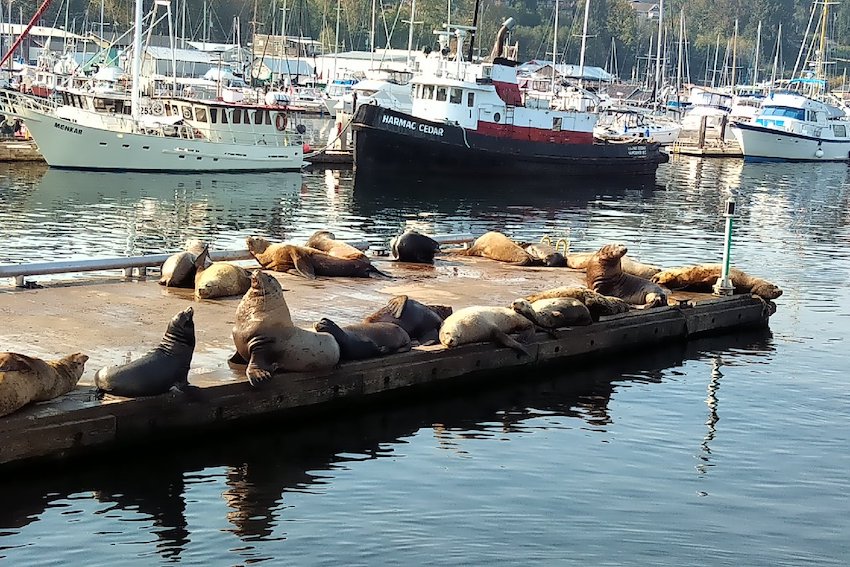
Sea Lions in Cowichan Bay, October 2022. Photo Nick Gudewill
First Nations and Pinnipeds
First Nations have utilized seals and sea lions for thousands of years. Yet segments of contemporary society oppose marine mammal harvests, even though their numbers have fully recovered after a century of excessive commercial hunting pressure.
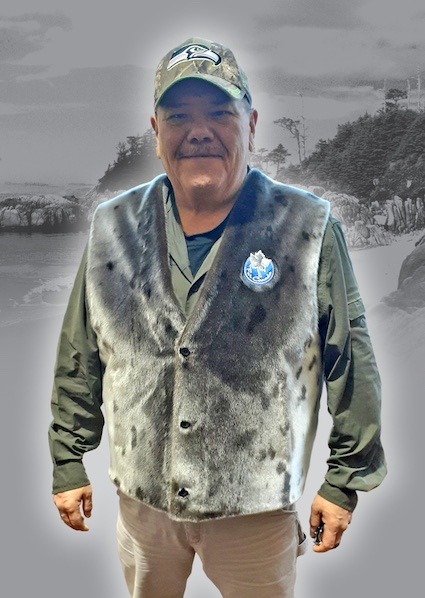
Tom Sewid in a sealskin vest
Tom Sewid, from the Kwakwaka’wakw Nation, is an ex-commercial fisherman and advocate for Canadian indigenous socio-economic development. He is president of the Pacific Management Pinniped Society (PBPS), which is a First Nations venture to re-start properly managed and humane seal hunts in BC. Correction, Thomas Sewid is president of Pacific Balance Marine Management Inc.
Sewid blames the environmental movement for federal government delays in moving forward with comprehensive pinniped harvest initiatives. The harvest proposals were labeled as, “a West Coast Seal Slaughter” in a 2021 news release from the Animal Alliance of Canada.
When asked if First Nations should harvest problem seals in estuaries Sewid said “It is each First Nations’ fiduciary responsibility to protect the fin-fish holding in the estuaries in their territories, which also means protecting them from pinniped predation”. He goes on to say. “Many First Nations in BC have been doing a good job, but not all, even though grants are available to establish training programs and humane harvest protocols, jointly developed with the Department of Fisheries and Oceans (DFO)”.
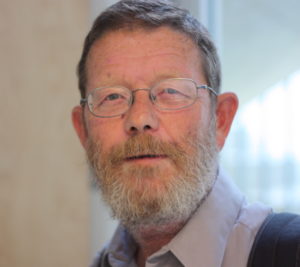
Dr. Carl Walters
Carl Walters, professor emeritus at UBC’s Oceans and Fisheries Institute, agrees with Sewid. He criticizes DFO for “foot dragging on pinniped harvest proposals”, but gives them credit for removing the regulation that previously limited seal hunting to food and ceremonial usage. Walters shares Sewid’s concern that environmentalist lobbying has delayed government decision making on comprehensive pinniped harvest proposals.
Rob Brouwer has been the Nitinat Hatchery manager for decades. In a recent conversation he reported the river water has gone subsurface for the first time in his memory. It is so low that up to 10,000 Chinook are spawning in the Nitinat where they have never spawned before. Rob estimates that another 5,000 Chinook are staged at the end of the lake waiting for water while trying to evade significant pinniped predation. Fortunately the hatchery has achieved its Chinook egg-take number.
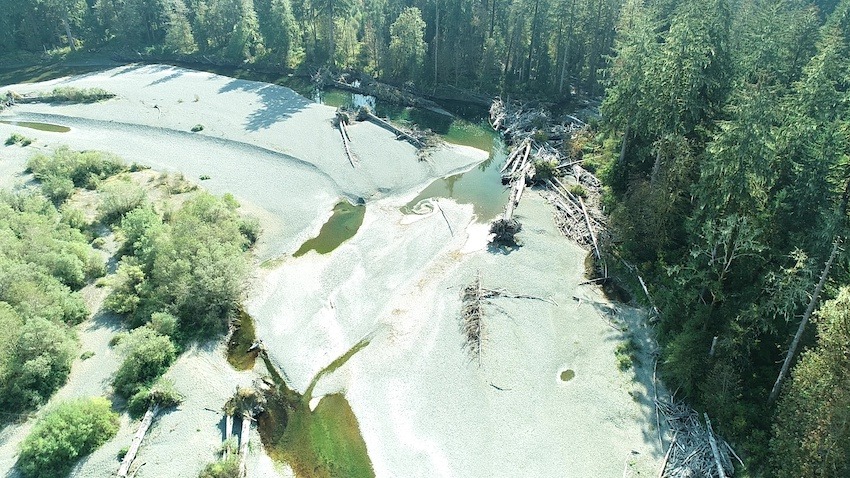
Nitinat River October 19 2022. Photo Ryan Abott
Significant rain is forecast for this weekend (October 21st, 2022), and potentially over multiple days. Hopefully enough materializes to draw salmon into rivers and creeks permitting reasonable natural spawning to occur.
However, there must be immediate and implementable solutions to mitigate the damage to salmon runs if these drought events continue. According to Brouwer, dams and weirs, which are still seen as a death sentence for salmon, can provide lifelines because of their water storage capacities. He is also convinced that strategic applications of modern hatchery technology must play a vital role.
2 Comments
Leave A Comment
Visit the Store
$34.99
$34.99
Featured Catch
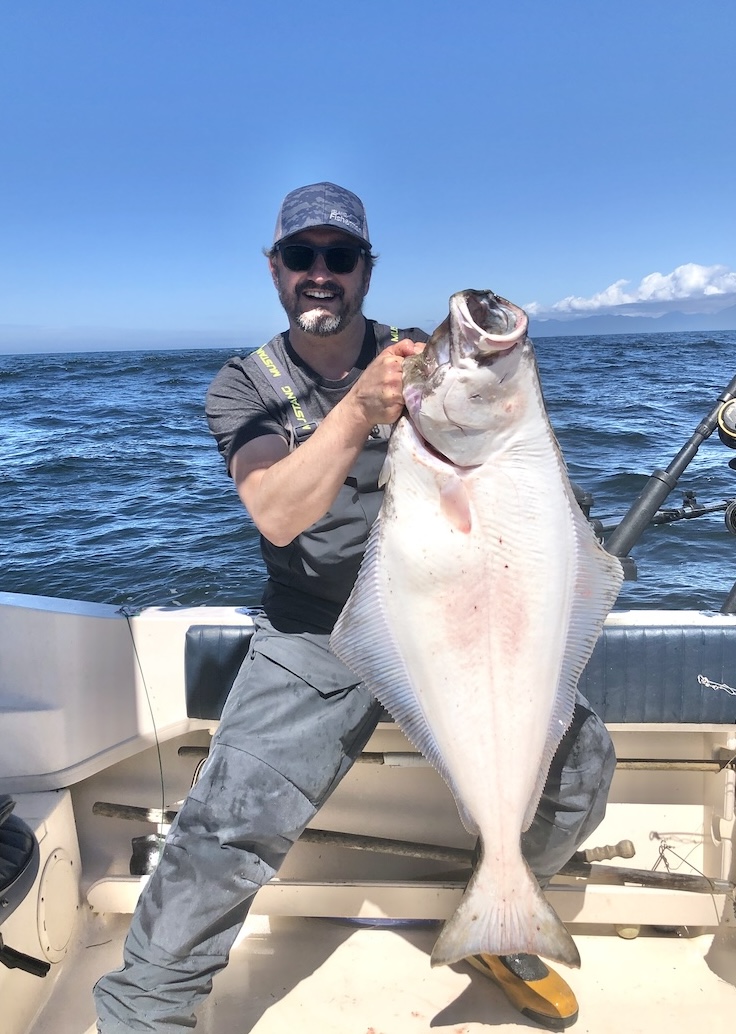
Joel Unickow halibut (Photo: Rob Frawley Lucky Strike Sportfishing Tofino)

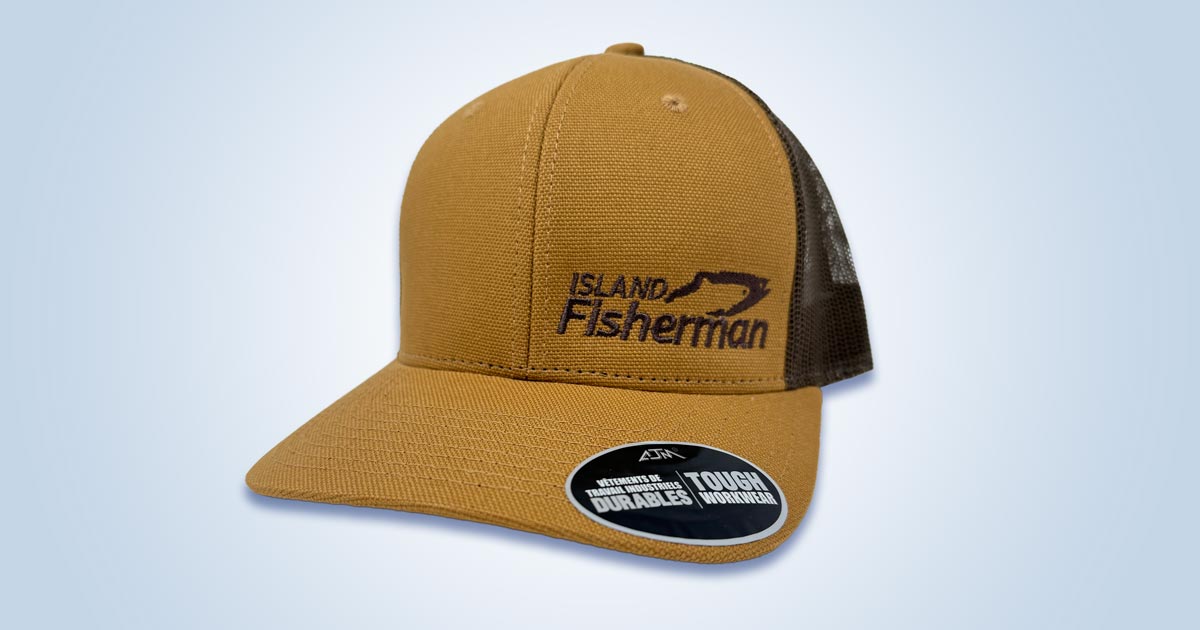

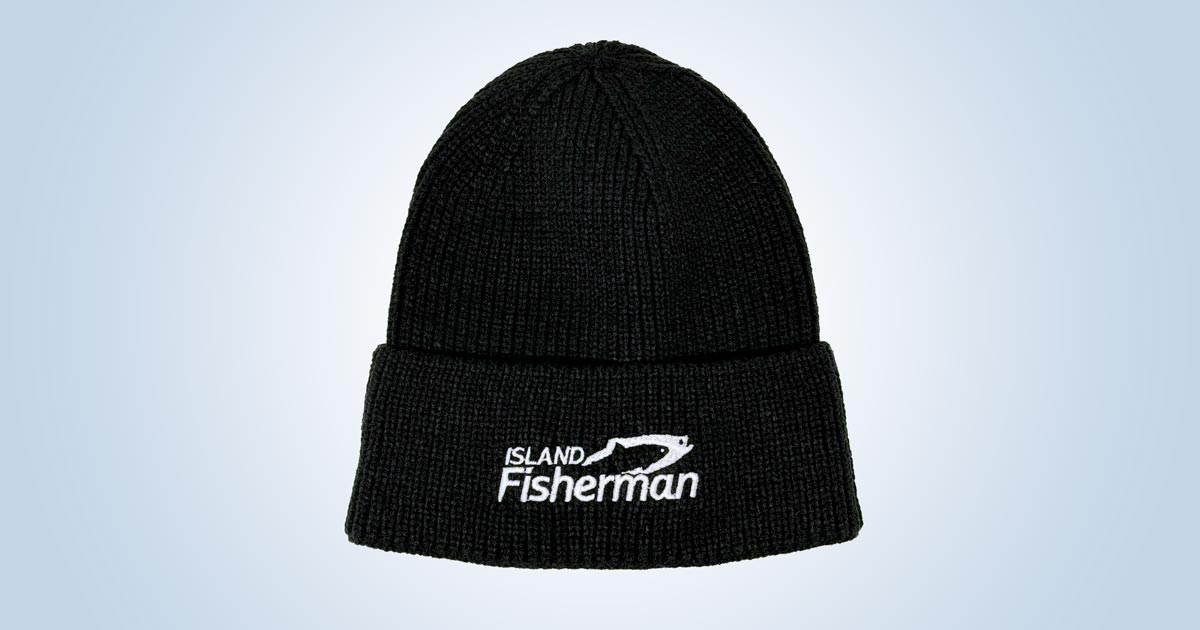
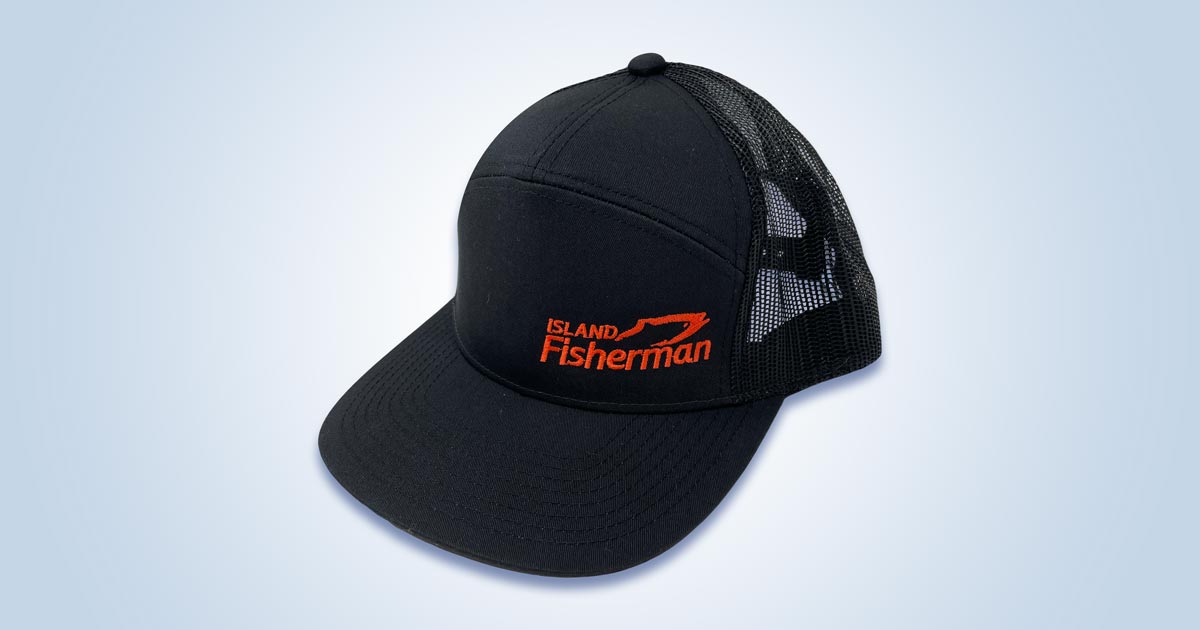
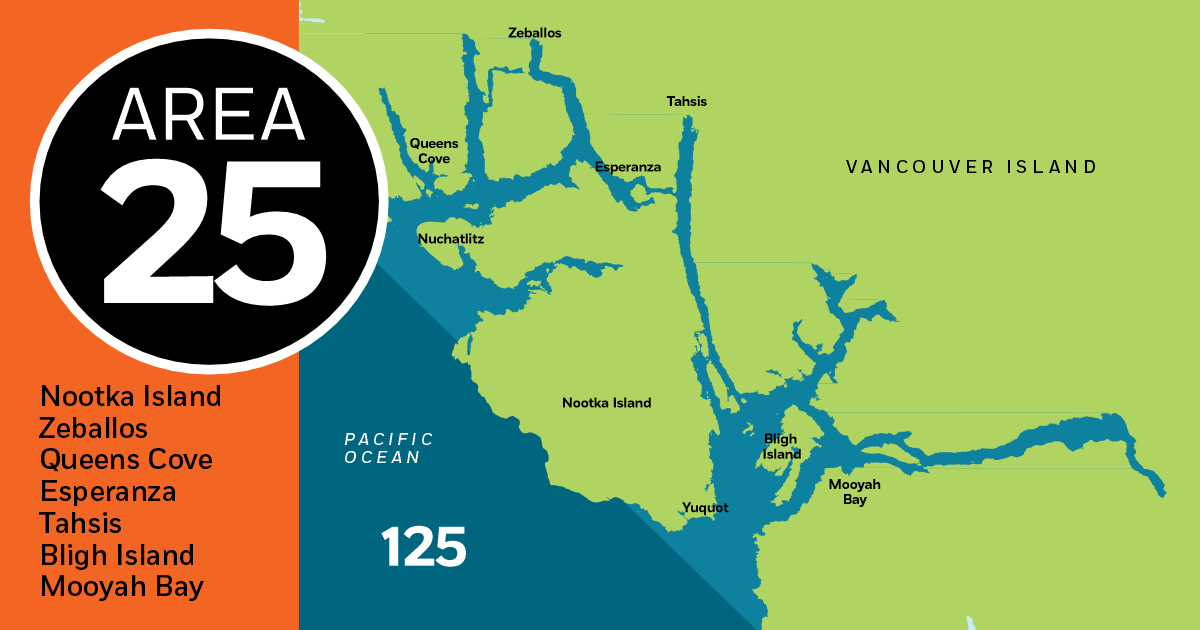
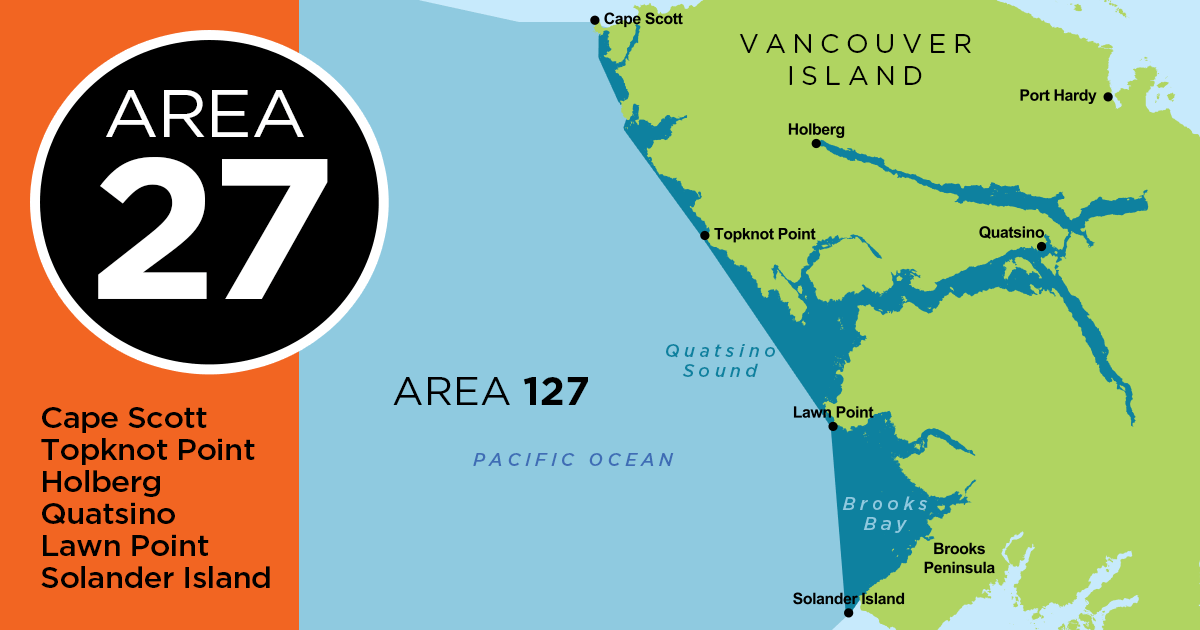
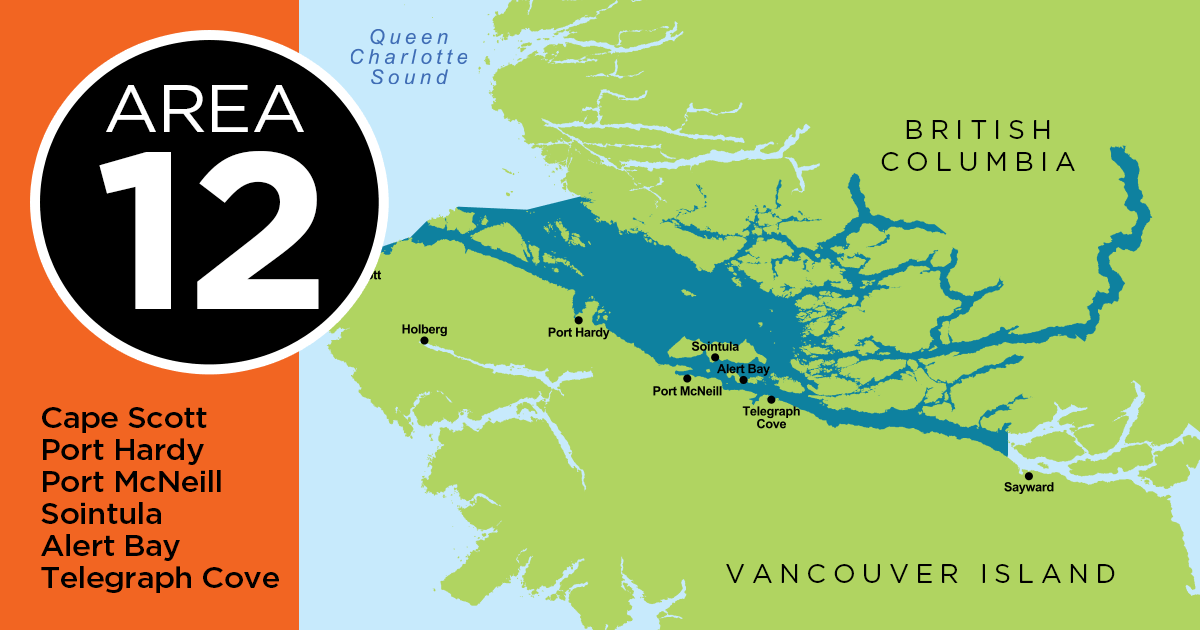
I support the pinnipeds harvest and would also purchase /wear a vest like Tom’s.
I agree with a humane harvest of pinnipeds